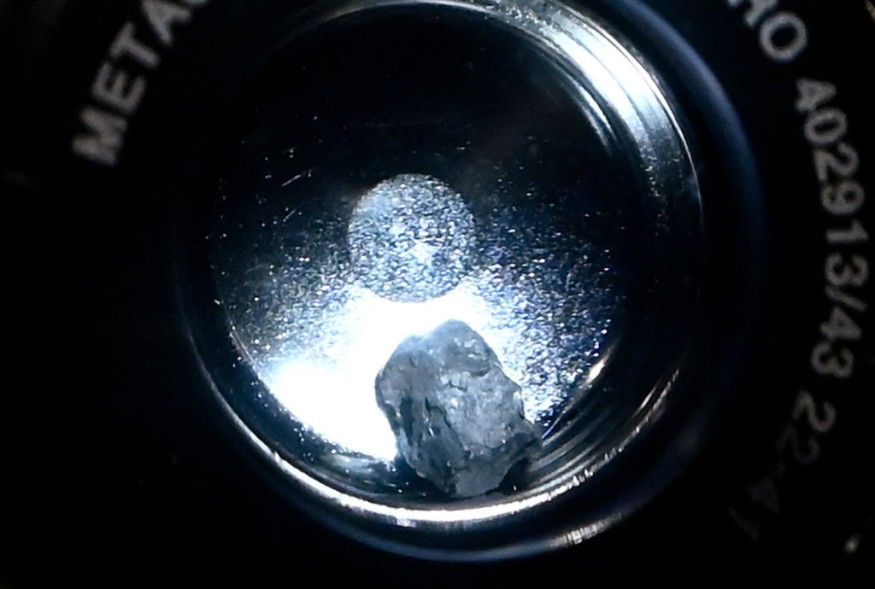Assigned to uncover clues about Earth's origins, NASA's OSIRIS-REx collected pieces from asteroid Bennu in late 2020. Recently, scientists detailed this extraterrestrial haul.
Dante Lauretta, the mission's principal investigator, expressed satisfaction at discovering hydrated, organic-rich remnants from the early solar system, fulfilling the mission's goals set almost two decades ago. He anticipates extensive examination by the cosmochemistry community.

Asteroid Bennu Sample's Unique Composition and Challenges
Professor Dante Lauretta, a specialist in planetary science and cosmochemistry at the University of Arizona, shared that the recovered bits from the 3-billion-year-old asteroid Bennu concentrated on the outer lid of the sample capsule, exhibit a unique composition rich in carbon and organic molecules.
The particles, characterized by a dark color, consist of centimeter- and millimeter-sized "hummocky boulders" with a distinctive "cauliflower-like texture."
Originally designed for a brief six-second contact, the OSIRIS-REx spacecraft unexpectedly descended 1.6 feet into Bennu's surface for 17 seconds. Successful material collection resulted in an unintended issue as particles started leaking from the sample collector's head. Professor Lauretta attributed this to a 1.3-inch (3.5 cm) stone jamming a small flap, allowing the material to escape into the lid.
Technical challenges persist due to two faulty fasteners, hindering access to the majority of the 70.3-gram sample within the head. Technicians are employing tweezers to extract tiny rocks through a partially open flap.
Preliminary spectroscopy findings, analyzing light reflections to determine the material composition, unveiled a dominant blue spectral signature. This unexplained hue suggests a potential higher water content than initially predicted, with more detailed insights expected in a spring scientific meeting.
The material also poses a puzzle, hosting substantial amounts of magnesium, sodium, and phosphorus. Professor Lauretta expressed bewilderment, stating, "It's a head-scratcher right now. What is this material?"
Asteroid Bennu's Slice Arrived in the UK
A fraction of the material collected from the asteroid Bennu, believed to potentially contain life's precursors, has been dispatched for spectral analysis at NASA's Reflectance Experiment Laboratory (RELAB) in Rhode Island.
Simultaneously, another portion of the sample, a minuscule millimeter-sized slice from the approximately 6-ounce (170-gram) collection, has made its way to the Natural History Museum in London. This fragment, regarded as a valuable insight into the solar system's most hazardous asteroid, has the potential to unravel the mysteries surrounding the origins of life on Earth.
Expressing overwhelming excitement, Professor Sara Russell, specializing in cosmic mineralogy and planetary science at the Natural History Museum, emphasized the significance of having the long-awaited sample for analysis. This tiny fragment, part of a larger collection, holds the promise of providing essential information about the formation of our solar system and the origins of life on Earth.
The global scientific community is poised to embark on a comprehensive analysis to uncover the story encoded within Bennu's material, often considered the residual building block of our solar system.
Ashley King, a meteorite researcher at the Natural History Museum, underscored the importance of Bennu as a repository of essential elements that played a role in the formation of Earth. The analysis aims to disentangle Bennu's story, shedding light on the origin of the solar system and Earth's history, making this scientific endeavor a crucial step in unraveling the mysteries of our cosmic neighborhood.
RELATED ARTICLE: Asteroid Bennu: Samples of the Potentially Hazardous Asteroid Now Available For Viewing in 1st Public Display in Smithsonian Museum
Check out more news and information on Space in Science Times.












